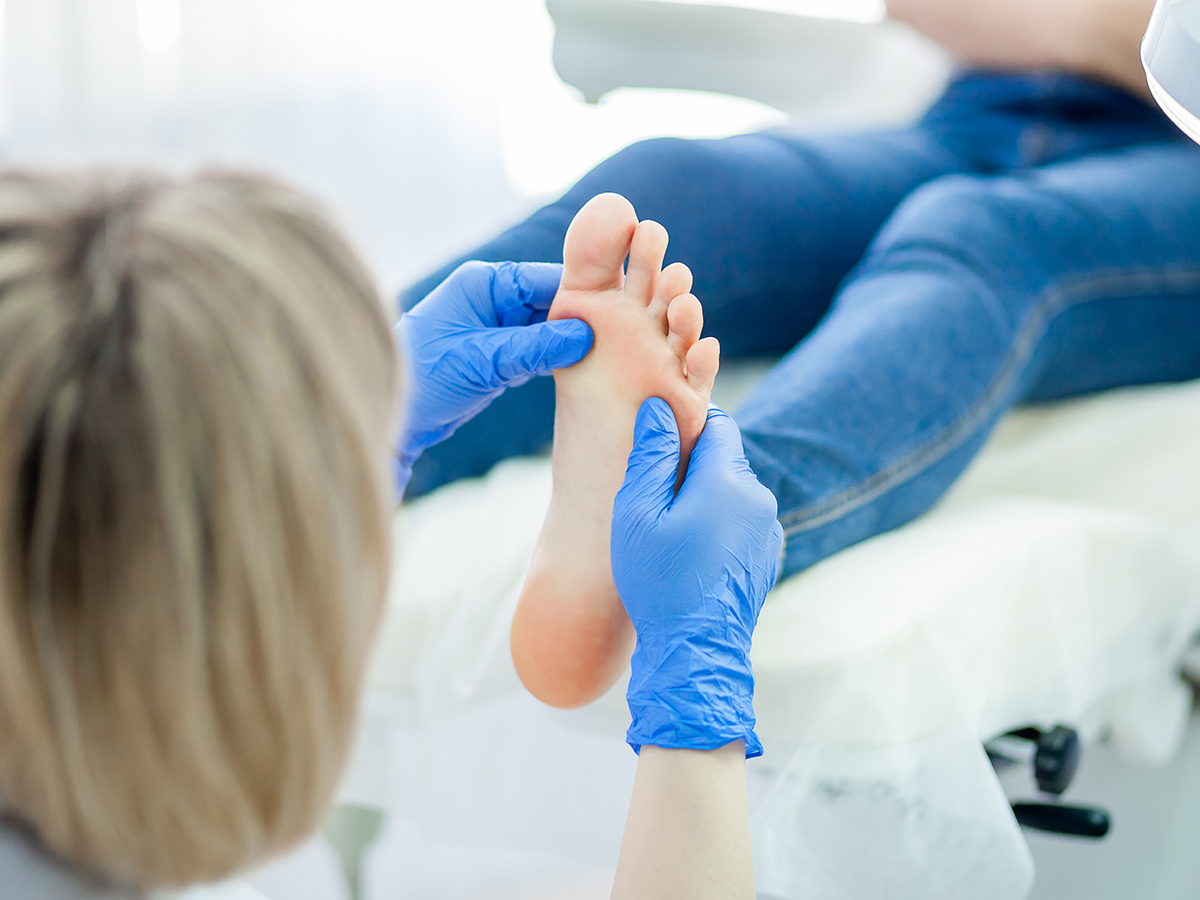

If you’ve been diagnosed with diabetes, then it’s likely that your GP and diabetes nurse have made it clear: your feet are at risk, and you must look after them carefully. But what are they at risk of – why is foot care so important – and of all the areas of the body to be concerned about, why the feet?
Today, Australia’s leading podiatry team here at My FootDr answer these questions and show you why your body will endlessly thank you for taking the time to look after your feet.
First Thing’s First: Why The Feet?
The symptoms of diabetes often begin in the feet first as they are the furthest away from our heart and spine, making them prone to poor circulation and nerve damage. This makes your feet vulnerable to a number of problems that can quickly turn serious – and even limb-threatening – without the right care and attention.
What Are The Risks For Your Feet In Diabetes?
1. Skin Changes – Dryness, Cracking
Our nerves help control the oil and moisture retained in the skin of our feet, so when nerves are damaged, our skin may start to feel dry, may peel, or even crack.
2. Corns & Calluses
Damaged nerves means we may start to lose some feeling in our feet and be unable to tell when our shoes are uncomfortably rubbing against our skin. The result is a build up of callus and corns. Paired with dry skin, thick callus may fissure and the cracks may bleed.
3. Foot Changes – Claw Toes, Hammertoes & Bunions
As nerves control muscles, nerve damage can lead to low muscle tone and weakness, which can lead to claw toes, hammertoes and bunions.
4. Foot Damage You Don’t Notice – Neuropathy
Neuropathy is the nerve damage that lessens your ability to feel what is happening around your feet – including pain, temperatures and general discomfort. When you can’t feel what’s happening around your feet, you don’t know to take action and stop the cause of the pain, and so damage to the foot like cuts and wounds can occur. Even at this point, you may not realise the damage has occurred and may not start looking after your feet and treating the problem. This can lead to foot ulcers (see below).
5. Foot Ulcers
Foot ulcers are serious – they’re the most common cause for lower limb amputations in people with diabetes here in Australia. Aside from being unable to detect an ulcer when it develops, both due to nerve damage and the common location on the bottom of the feet (ball of the foot or heels), foot ulcers can also be difficult to effectively treat because of the effects of poor circulation in those with diabetes. Remember: all ulcers are serious and must be seen by your podiatrist or GP immediately, whether they’re causing you pain or not.
6. Poor Healing & Infection
Damaged blood vessels are less effective in moving oxygen-rich and nutrient-rich blood around the body for effective and timely healing. This can see wounds take significantly longer to heal, and as a result of leaving wounds open for longer, increase their risk of infection. If an infection does develop, poor circulation makes it harder to fight that infection, increasing the risk of it taking a turn for the worse.
7. Amputation
Amputation of part of or the whole foot is what all of the above risks accumulate to. While many view this as an unlikely scenario, the reality is that there are over 4,400 amputations every year in Australia as a result of diabetes – and over 10,000 hospital admissions for diabetic foot ulcers1. This makes it a very real problem that anyone with diabetes must take seriously and work to prevent.
Why Good Foot Care Is Crucial
Good foot care can help prevent a number of diabetic foot problems – helping you identify issues while they’re still small and manageable. The effect can be massive – it is estimated that up to 75% of diabetic foot ulcers are preventable with the right care both from personal action and strategies like wearing the right footwear2.
Good foot care starts with an annual diabetic foot health check to understand the current impact of diabetes on your feet in terms of your sensation, circulation and other immediate risks. As the effects of diabetes become progressively worse, knowing where you’re at means you can have the best advice on how to practice good foot care at home – this is an important part of our discussions at your diabetic foot health check.
Note: For practical tips on how to help a loved one care for their foot health at home, click here.
Our podiatrists at My FootDr are experienced in all aspects of diabetic foot health – from noticing subtle changes in the integrity of your skin that may indicate an underlying problem, to carefully reducing the corns or callus that are increasing your ulcer risk, to creating custom management plans to help you best care for your feet.
If you’ve been diagnosed with diabetes – whether it’s a new diagnosis or you’ve had diabetes for decades – we’re here to help. Book your appointment online by clicking here or call us on 1800 FOOT DR
1 https://www.diabetesaustralia.com.au/facts-and-figures/
2 https://onlinelibrary.wiley.com/doi/full/10.1002


